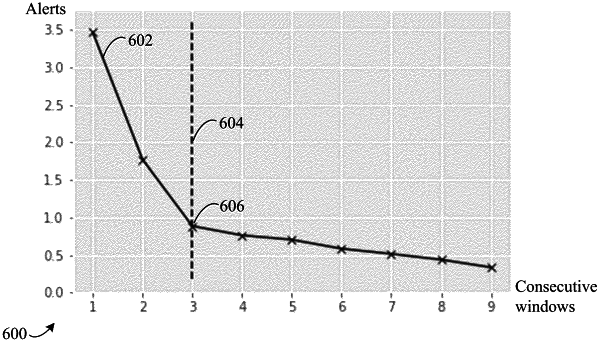| CPC H04L 41/0681 (2013.01) [H04L 43/045 (2013.01); H04L 43/16 (2013.01); G06F 3/0481 (2013.01); H04L 41/22 (2013.01); H04L 67/10 (2013.01)] | 20 Claims |

|
1. A method performed by a computing system, the method comprising:
receiving values associated with a metric determined for a past time period;
determining a first time period, a second time period, and a third time period based on a time window of a defined duration, wherein:
the first time period comprises a first number of consecutive instances of the time window;
the second time period comprises a second number of consecutive instances of the time window that is greater than the first number of consecutive instances of the time window; and
the third time period comprises a third number of consecutive instances of the time window that is greater than the first number of consecutive instances of the time window and the second number of consecutive instances of the time window;
for the first time period, calculating a first number of times during the past time period that the values associated with the metric meet a threshold in each of the first number of consecutive instances of the time window;
for the second time period, calculating a second number of times during the past time period that the values associated with the metric meet the threshold in each of the second number of consecutive instances of the time window;
for the third time period, calculating a third number of times during the past time period that the values associated with the metric meet the threshold in each of the third number of consecutive instances of the time window;
determining that a first difference between the first number of times and the second number of times is greater than a second difference between the second number of times and the third number of times;
in response to determining that the first difference between the first number of times and the second number of times is greater than the second difference between the second number of times and the third number of times, selecting the second number of consecutive instances of the time window as an optimal number of consecutive instances of the time window;
monitoring the metric to trigger system alerts based on the optimal number of consecutive instances of the time window; and
triggering a system alert based on the monitoring.
|